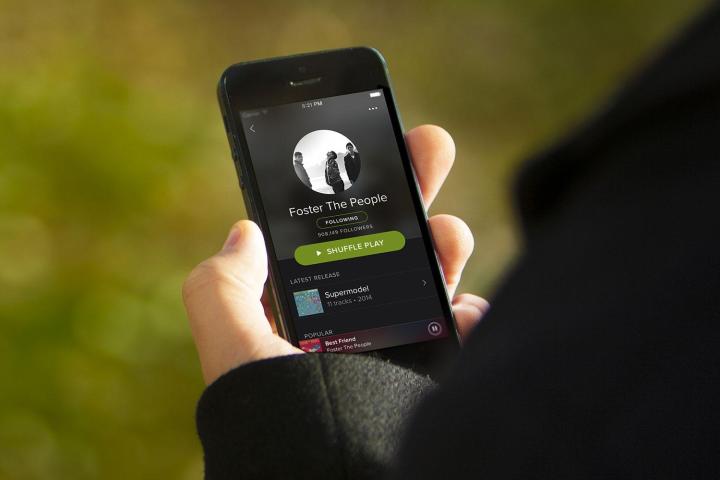
A new report from Ernst & Young with French record label trade group SNEP set out to find out just how much of your $10 monthly subscription fee actually goes to the artist. And, not surprisingly given the antiquated hierarchy of the music industry, the answer is not very much.
Cited in an article by Music Business Worldwide, the new report shows exactly what percentage each cog in the music streaming wheel gets per subscription for two major players in global streaming: Spotify and Deezer. Almost half (45.6 percent) goes to the labels, 20.8 percent to the streaming platform, 16.7 percent to the taxman, and 10 percent for the songwriters and publishers to split. What’s left for the artist? A measly 6.8 percent.
It’s not surprising, then, that some musicians are getting peeved about this, and voicing their frustrations. While Swift and others have put the blame on streaming services, claiming the new model is inherently unfair, as the above numbers indicate, the artists’ own labels are actually banking far more dough then the streaming platforms are.
And when Music Business World looked at the numbers after taxes, the figures got even more startling. Labels, in the same aforementioned example take home a whopping 73.1 percent of the cash Spotify serves up. Artists grab a little more at 10.9 percent of the net profits after taxes.
The justification for such a divide may have made sense back in the day when the primary distribution of music was via CDs, vinyl, cassettes, and DVDs that needed to be manufactured, warehoused, shipped, stocked, and sold in stores. But with digital downloading reigning supreme, requiring no more than a simple digital upload, shouldn’t artists get a bigger piece of the pie?
Given this information, it’s no surprise that we’re seeing more and more independent labels and artists – hello Macklemore and Diplo, just to name a few. The big labels may want to start rejigging their percentages before artists decide they no longer need them for online distribution, and deal directly with the Spotifys, iTunes, Deezers, and Rdios of the online world.
After all, given the fact that a modern recording studio can now largely exist on a laptop, and many artists can create an album in their basement that is just a few hours of mastering away from radio ready, the bloated production fees labels cover begin to look archaic. And in the MP3 era, other than production and marketing, what exactly are labels doing for these artists?
It doesn’t take a mathematician to figure out that 75 percent is far better than 10 percent, especially for the person or group who’s actually providing the talent onstage.
Editors' Recommendations
- The best music streaming services of 2024
- How to switch from Spotify to Apple Music
- Spotify’s HiFi tier was MIA in 2021. Will 2022 be any different?
- Spotify could launch its HiFi lossless audio tier any day now
- Spotify Plus might give free users unlimited track skipping for $1 per month


